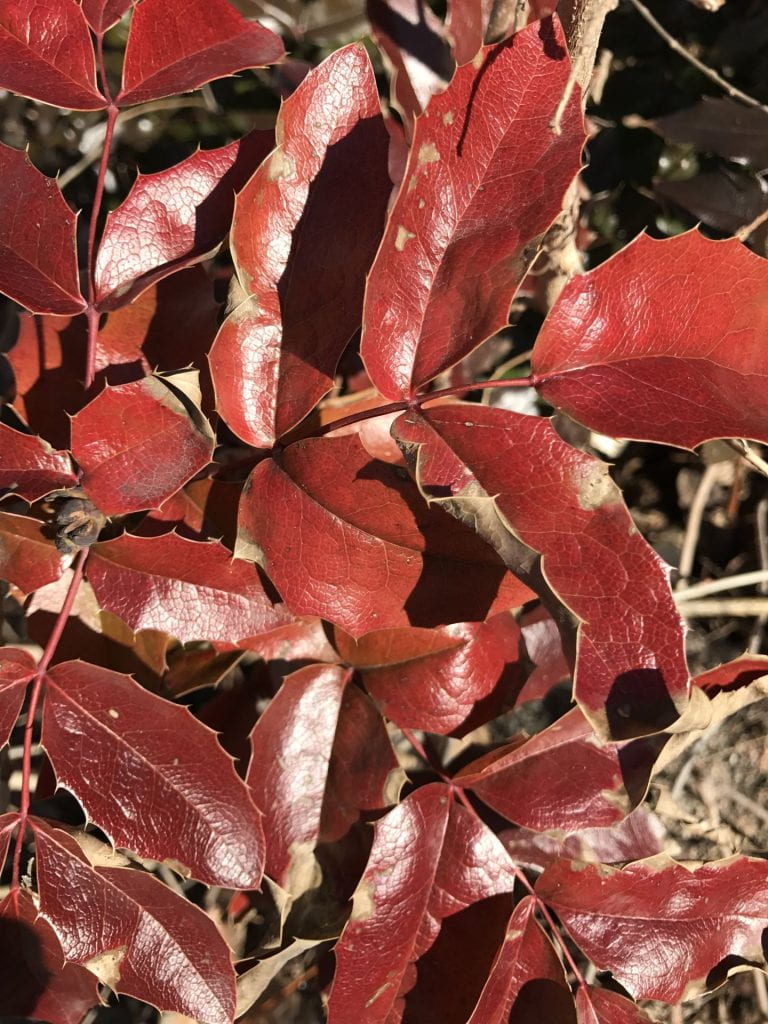

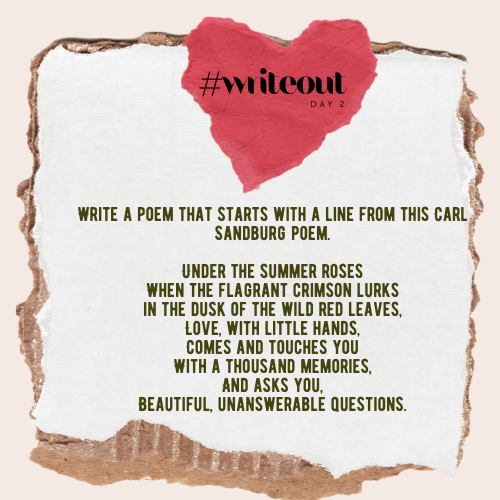
Prose and Poetry Inspiration
The second Monday in October is Indigenous People’s Day and WriteOut* honors the continued contributions of native peoples who have lived in North America for thousands of years. I wondered what, in my photos, might contribute to the day’s honors. I found a tweet [X] that shared a “spark” — a prompt for writing outdoors from the National Park Service Carl Sandburg Home site in Flat Rock, NC. That prompt asks us to take a line from a Carl Sandburg poem and create our own with that line as a starting point. After reading the poem [above, right], the line that jumped out for me was “In the dusk of the wild red leaves.” I knew I have photos of red leaves and that the plant with the red leaves was used by Native Americans. Inspiration!
Oregon Grape
The bright red leaves shown above are from the Oregon Grape, state flower of Oregon, and native plant of western North America in the winter of 2017. The lovely evergreen plant with the holly-like leaves grows wild everywhere here, and it produces deep blue berries that are edible, a staple of Native Americans throughout their history. The plant, Mahonia aquifolium, is not related to grapes or holly! In spring, clusters of yellow flowers brighten the area and bumblebees feast! From the inner bark, Native Americans made yellow dye, and from the berries, purples, blues, or pink dyes were made. The Stravaigin Yarn Company wrote an article explaining the dye process.
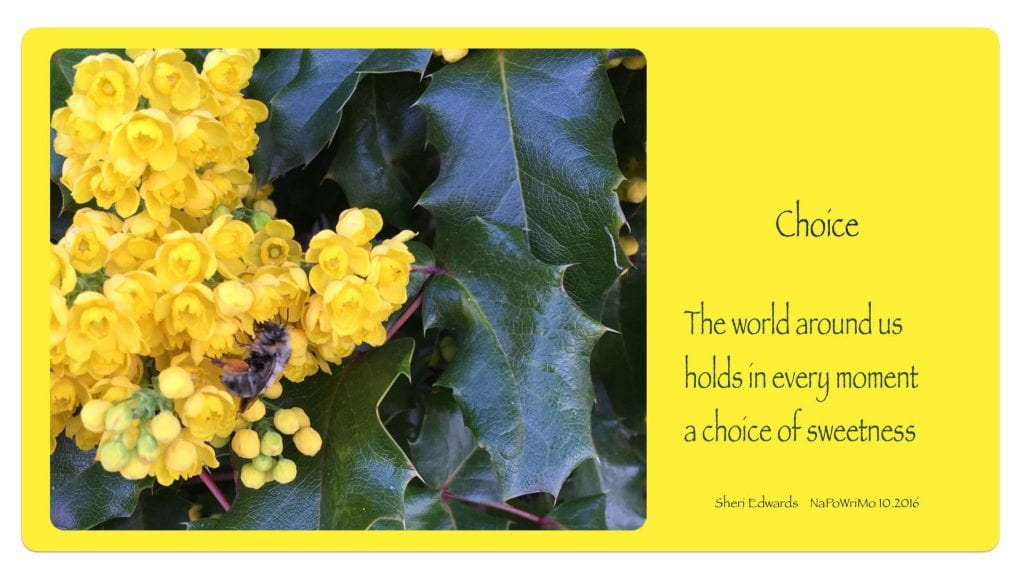
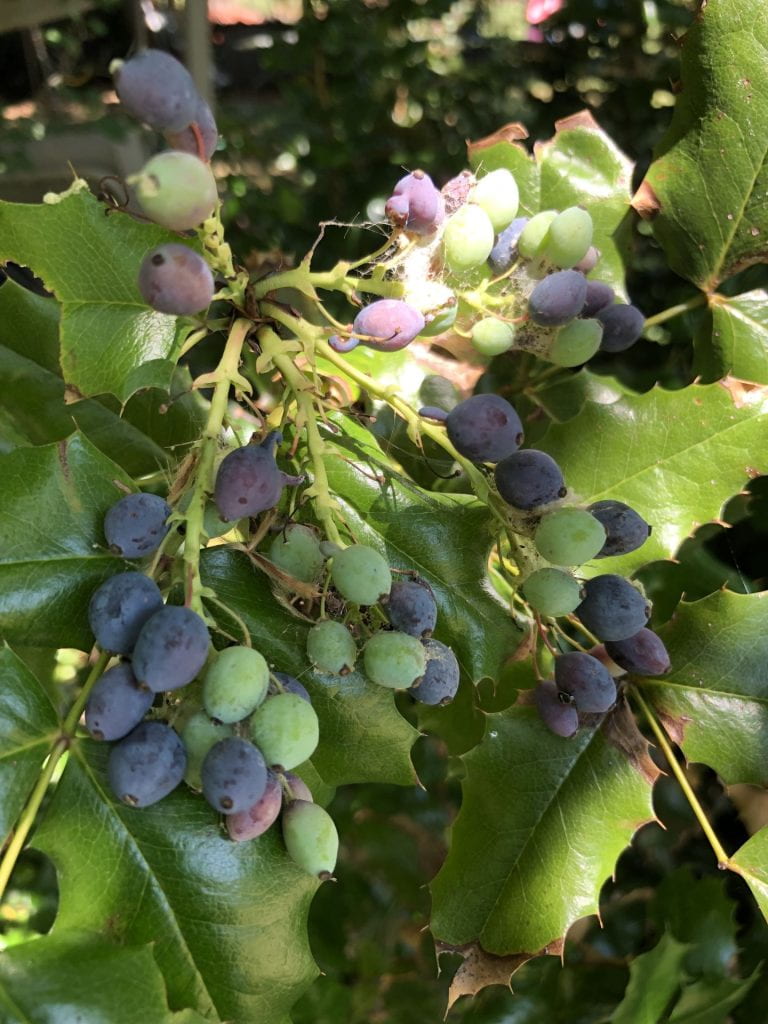
All year long the lovely Oregon grape provides colorful foliage and habitat for wildlife. Birds especially love the berries and the flowers are pollinated by the humble bumblebee!
Poetry
What fascinates me most about the Oregon grape is that it is evergreen. It’s a delight in the cold of white or dull winters to have green and red foliage brighten the yard. And the berries feed the mule deer and birds when they need it the most, fall and winter. And so, I took the Carl Sandburg poem, used a bit of its formatting and started with the line, “In the dusk of the wild red leaves.” I wanted to emphasize the cold, the frost, the berries and their feast.
In the Dusk of the Wild Red Leaves
In the dusk of the wild red leaves
Sheri Edwards
When the cold of Father Winter lurks
To freeze and hold the bluest of berries,
Love, in fractals of frosted blue,
Presents and calls birds to the evergreen
with its tart feast
and says to all
“Eat, for spring will come.”
10.09.23 282.365.23
Poetry/Photography
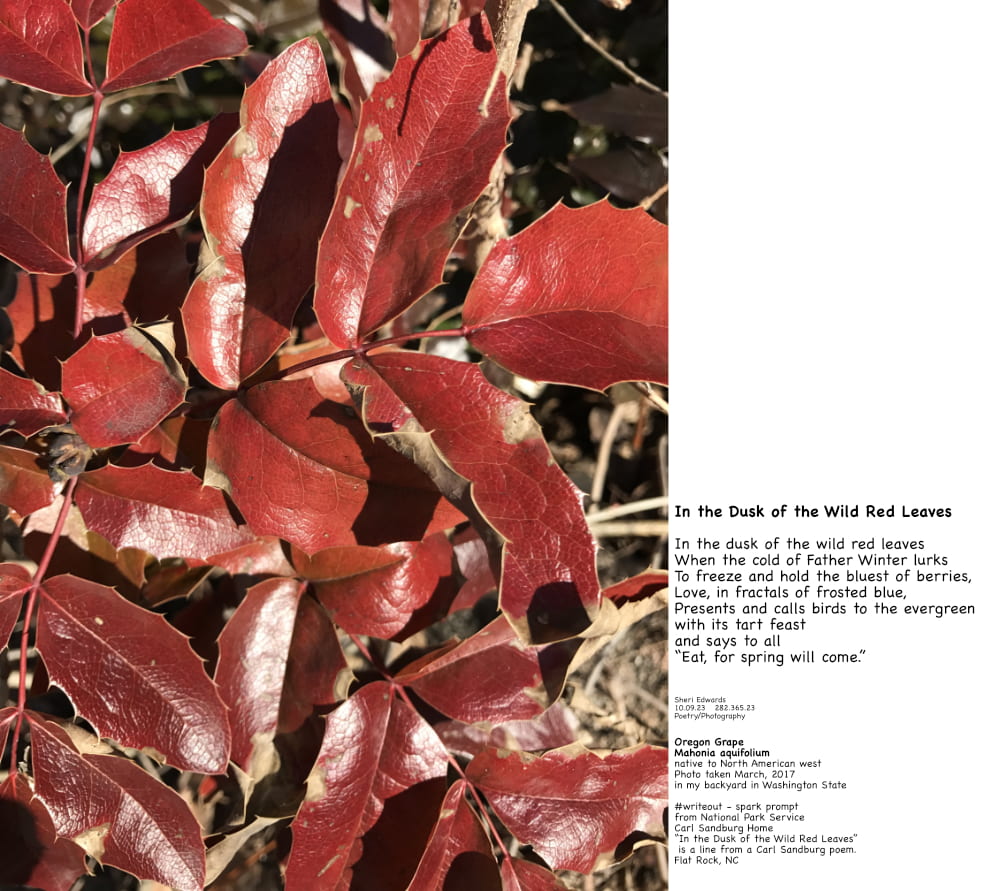
*Join in!
This post is part of the October WRITEOUT adventure, October 8 through the 22nd, partnership of the National Writing Project and the National Park Service — a choice to enjoy the outdoors with poetry, prose, and parks for Write Out 2023. Organized as a public invitation to get out and create, supported by a series of free online activities, Write Out invites educators, students, and families to explore national parks and other public spaces. The goal is to connect and learn through place-based writing and sharing. Check out this infographic for the flow of the two weeks.
Learn more and sign up: https://writeout.nwp.org
This is my sixth year with WriteOut with all my WriteOut posts here.
